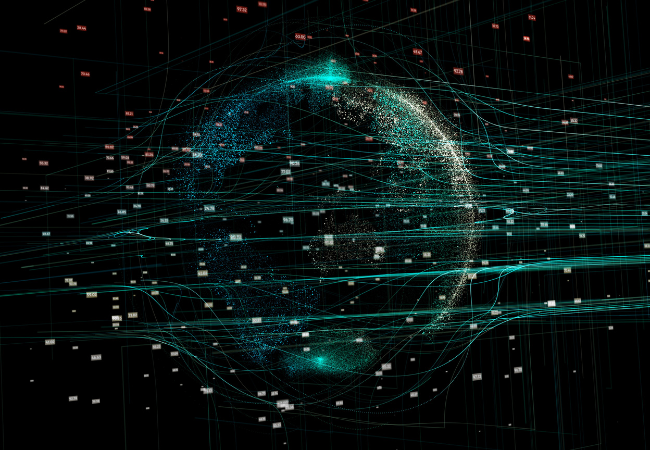ünikorn: The Mythical Marvel of Legends and Dreams

ünikorn , those ethereal creatures of legend, have galloped through our collective imagination for centuries. With their spiraling horns and otherworldly grace, these mythical beings have captivated hearts and minds, symbolizing purity, magic, and wonder. But what is it about unicorns that holds such a powerful sway over us?
The Origins of Unicorns
Early Mythology
The legend of the ünikorn stretches back to ancient times, with the earliest mentions found in the annals of civilizations long past. In Mesopotamian art, unicorn-like creatures were depicted, and the Indus Valley Civilization revered a one-horned beast that bore a striking resemblance to the unicorn of later European folklore.
Cultural Significance in Ancient Civilizations
ünikorn were more than mere myths; they held significant cultural weight. In China, the qilin, often depicted as a unicorn, was considered a harbinger of prosperity and peace. Similarly, in India, the unicorn was a symbol of divine truth and beauty, bridging the mortal and the divine.
Unicorns in Medieval Europe
Symbolism and Representation
In medieval Europe, ünikorn took on new layers of meaning. They became symbols of Christ, representing purity and grace. Medieval bestiaries, those illustrated compendiums of beasts, often depicted unicorns being tamed by virgins, a metaphor for the soul’s union with Christ.
Unicorns in Literature and Art
From tapestries to manuscripts, unicorns were immortalized in medieval art and literature. The famous “Hunt of the Unicorn” tapestries, housed in the Cloisters of the Metropolitan Museum of Art in New York, tell the story of a unicorn’s capture and symbolic resurrection, reflecting themes of sacrifice and redemption.
The Unicorn’s Physical Description
Common Features
ünikorn are traditionally depicted as horse-like creatures with a single, spiraling horn protruding from their foreheads. Their coats are often described as pure white, symbolizing innocence and purity.
Variations Across Cultures
While the classic European unicorn is well-known, other cultures envision unicorns differently. In Japan, the kirin is a dragon-like creature with a horn, while the Persian karkadann resembles a rhino more than a horse. These variations highlight the unicorn’s adaptability across different mythologies.
Symbolism and Meaning
Purity and Innocence
Unicorns are timeless symbols of purity and innocence. Their depiction as gentle, virginal beings emphasizes their association with chastity and untouched beauty.
Power and Strength
Contrasting their delicate nature, unicorns also embody power and strength. Their horns, or alicorns, were believed to hold potent magical properties, capable of neutralizing poisons and bringing healing.
Unicorns in Folklore and Fairy Tales
Popular Stories
Folklore is rich with unicorn tales. From the Persian story of the karkadann to European legends of the unicorn’s healing touch, these stories have enchanted generations.
Role in Children’s Literature
Unicorns have a special place in children’s literature, sparking imagination and wonder. Classics like “The Last Unicorn” by Peter S. Beagle and “Elidor” by Alan Garner weave unicorns into their narratives, blending fantasy with profound moral lessons.
The Unicorn’s Horn: The Mythical Alicorn
Healing Properties
The alicorn, or unicorn horn, was reputed to possess incredible healing properties. Ancient texts describe it as a remedy for poison and a cure for various ailments, making it a sought-after treasure in medieval times.
Symbol of Power
Beyond its medicinal value, the alicorn symbolized immense power. It was believed to be a conduit of magical energies, capable of granting wisdom and strength to its bearer.
Modern Depictions of Unicorns
In Pop Culture and Media
Today, ünikorn prance across the screens of movies, TV shows, and advertisements. From the playful My Little Pony series to the majestic unicorns in “The Chronicles of Narnia,” these mythical creatures continue to capture our fascination.
Unicorns in Marketing and Branding
Unicorns have also become a staple in marketing and branding. They are used to convey magic, rarity, and uniqueness, appealing to consumers’ desires for the extraordinary.
Unicorns in Contemporary Literature
Books and Novels
Modern literature embraces unicorns, weaving them into complex narratives. Works like “The Last Battle” by C.S. Lewis and “Harry Potter and the Philosopher’s Stone” by J.K. Rowling introduce unicorns as symbols of purity and magic, adding depth to their stories.
Influence on Modern Fantasy Genre
Unicorns have significantly influenced the modern fantasy genre, inspiring countless authors and creators. Their presence adds a layer of enchantment and moral significance to fantasy worlds, enriching the genre’s tapestry.
Unicorns in Art and Fashion
Artistic Interpretations
Artists continue to be inspired by unicorns, creating pieces that range from the whimsical to the profound. Contemporary art often depicts unicorns in vibrant, surreal settings, reflecting their mythical nature.
Unicorn-inspired Fashion Trends
Unicorns have even trotted into the world of fashion. From unicorn-themed clothing to accessories, these mythical creatures add a touch of magic to everyday life, making fashion fun and fantastical.
Scientific Theories and Real-World Inspirations
Possible Real Animals
Some scientists speculate that unicorn myths may have been inspired by real animals, such as the narwhal, whose spiral tusk resembles the unicorn’s horn, or the elasmotherium, an ancient rhinoceros with a single large horn.
Unicorn-like Creatures in Nature
Nature is full of creatures that evoke the unicorn’s image. The saola, or Asian unicorn, is a rare and elusive animal with long, straight horns, reminding us that the natural world can be as magical as our imaginations.
Unicorns and Psychology
Symbolic Meanings in Dreams
Unicorns often appear in dreams as symbols of purity, innocence, and personal transformation. Dreaming of a unicorn can signify a longing for a return to innocence or a desire for spiritual growth.
Unicorns as Archetypes
In psychology, unicorns can be seen as archetypes representing idealism and the pursuit of perfection. They embody the quest for the unattainable, driving us to strive for our highest ideals.
The Unicorn Renaissance
Revived Interest in Modern Times
In recent years, there has been a resurgence of interest in unicorns. They have become icons of positivity and creativity, celebrated in festivals and events around the world.
Unicorn Festivals and Events
Unicorn-themed festivals and events ünikorn bring together enthusiasts to celebrate these mythical creatures. These gatherings highlight the enduring allure and cultural significance of unicorns in modern times.
Unicorns as a Symbol of Hope and Imagination
Unicorns in Inspirational Stories
Unicorns often feature in inspirational stories, symbolizing hope and imagination. They remind us that magic and beauty can be found in the most unexpected places, encouraging us to keep our dreams alive.
Impact on Personal Growth and Creativity
Unicorns inspire us to explore our ünikorn creativity and embrace our unique qualities. They encourage us to see the world through a lens of wonder and possibility, fostering personal growth and imaginative thinking.
Conclusion
Unicorns, with their timeless allure and mythical beauty, continue to enchant and inspire. They traverse the boundaries of reality and imagination,ünikorn embodying the ideals of purity, strength, and magic. From ancient myths to modern fantasies, unicorns remain a symbol of hope, reminding us that the extraordinary is always within reach.
FAQs
- Why are unicorns often associated with purity?
- Unicorns are traditionally depicted as pure and virginal creatures, symbolizing innocence and untarnished beauty, often in connection with the divine or holy.
- What is the significance of the unicorn’s horn?
- The unicorn’s horn, or alicorn, is believed to have magical properties, including healing and the ability to neutralize poisons, symbolizing power and protection.
- How have unicorns influenced modern pop culture?
- Unicorns have become icons in pop culture, appearing in movies, TV shows, and marketing, symbolizing uniqueness, magic, and fantasy.
- Are there any real animals that might have inspired unicorn myths?
- Yes, animals like the narwhal, with its spiral tusk, and the elasmotherium, an ancient rhinoceros, may have inspired unicorn legends.
- Why do unicorns appear in dreams?
- In dreams, unicorns often symbolize purity, transformation, and the pursuit of idealistic goals, reflecting a deep-seated longing for magic and wonder.



